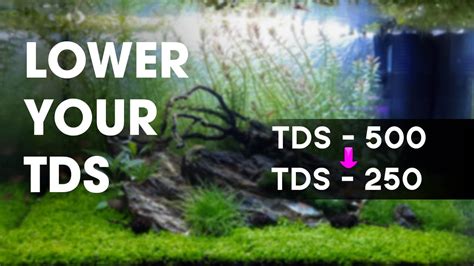The Complete Guide to Lowering TDS in Freshwater Aquariums
Total dissolved solids (TDS) represent the total amount of inorganic minerals and salts dissolved in your aquarium water. While some minerals are essential for healthy aquatic life, excessively high TDS can negatively impact your fish and plants. This comprehensive guide explores the causes of high TDS, the consequences of neglecting it, and effective methods for lowering TDS in your freshwater aquarium.
What is TDS in an Aquarium and Why Does it Matter?
TDS is measured in parts per million (ppm) or milligrams per liter (mg/L). A healthy range for most freshwater aquarium species typically falls between 50-200 ppm. Higher levels can lead to a variety of problems, while excessively low levels can also create imbalances. Understanding your aquarium's TDS is crucial for maintaining a thriving environment.
What Causes High TDS in Freshwater Aquariums?
Several factors can contribute to elevated TDS levels:
-
Hard tap water: Your source water's mineral content directly impacts your aquarium's TDS. Hard water naturally contains higher concentrations of minerals like calcium and magnesium.
-
Overfeeding: Uneaten food decomposes, releasing dissolved nutrients and raising TDS.
-
Insufficient water changes: Regular water changes are essential for diluting accumulated dissolved solids.
-
Use of certain medications: Some fish medications can increase TDS levels. Always check the product information.
-
Substrate leaching: Certain substrates can release minerals into the water, slowly increasing TDS over time.
-
Improper filtration: Inadequate filtration can fail to remove dissolved solids effectively.
-
Old or decaying aquarium decorations: Some aquarium decorations might leach minerals into the water.
What are the Consequences of High TDS in a Freshwater Aquarium?
High TDS levels can lead to several problems:
-
Stress on fish and invertebrates: High mineral concentrations can irritate fish gills and impair their ability to regulate their internal salt balance, leading to stress and potential health issues.
-
Inhibited plant growth: Some plants struggle to absorb nutrients in water with very high TDS, hindering their growth.
-
Altered water chemistry: High TDS can alter the pH and overall water chemistry, affecting the availability of essential nutrients and potentially creating an unsuitable environment for aquatic life.
-
Increased algae growth: High nutrient levels (often correlated with high TDS) can fuel excessive algae growth.
How to Lower TDS in Your Freshwater Aquarium: A Step-by-Step Guide
Several methods can help lower TDS in your aquarium:
1. Regular Water Changes
This is the most fundamental approach. Regular partial water changes (25-50% weekly) dilute the accumulated dissolved solids. Use conditioned water with lower TDS, and ensure the temperature matches your aquarium's.
2. Use of Reverse Osmosis (RO) or Deionized (DI) Water
RO/DI water removes almost all dissolved minerals and salts. However, it lacks essential minerals for your aquarium. You'll need to remineralize RO/DI water using appropriate products to ensure the water contains essential minerals.
3. Optimize Feeding Practices
Avoid overfeeding. Only feed your fish what they can consume within a few minutes. Remove any uneaten food promptly.
4. Improve Filtration
Ensure your filter is adequately sized for your tank and maintained regularly. Consider adding additional filtration methods, such as chemical media designed to remove dissolved solids.
5. Choosing the Right Substrate
Opt for inert substrates that do not release minerals into the water column.
6. Replace Old Aquarium Decorations
If you suspect old decorations are contributing to high TDS, consider replacing them with newer, inert materials.
7. Using Water Softeners (Caution Advised)
Water softeners exchange hard water minerals with sodium. While reducing overall hardness, this increases the sodium level, which might not be beneficial for all aquatic life. This method requires careful monitoring and consideration.
How Often Should I Test My Aquarium's TDS?
Regular TDS testing is crucial. It's recommended to test at least once a week, especially when making changes to your aquarium environment, such as introducing new fish or plants, changing substrates, or using medications.
What TDS Level is Ideal for My Freshwater Aquarium?
The ideal TDS level varies depending on the species of fish and plants you keep. Research the specific requirements of your aquatic inhabitants. Aim for the lower end of the recommended range unless specific circumstances require higher levels.
What if My TDS is Too Low?
While high TDS is a more common problem, excessively low TDS can also cause problems. If your TDS is too low, you may need to remineralize your water using aquarium-safe mineral supplements.
This comprehensive guide provides a solid foundation for managing TDS in your freshwater aquarium. Remember that consistent monitoring, regular water changes, and thoughtful aquarium management are key to maintaining a healthy and thriving aquatic environment for your fish and plants.

